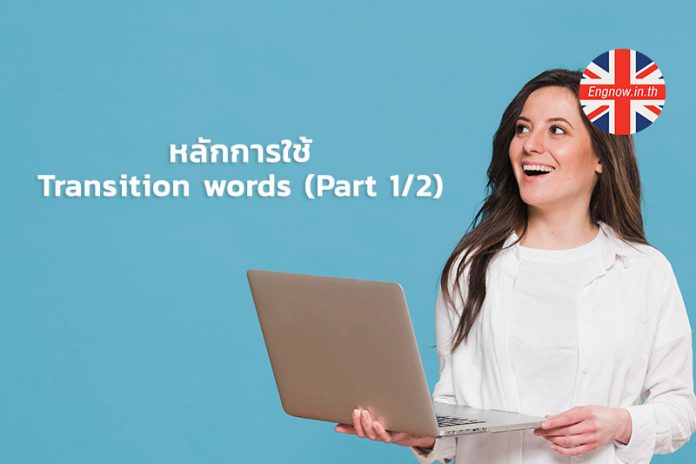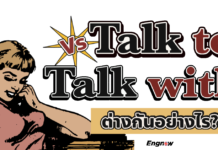Transition words คือ คำหรือกลุ่มคำ (วลี) ที่ใช้เชื่อม อนุประโยคหรือส่วนต่าง ๆ ของประโยคภาษาอังกฤษเข้าด้วยกัน ทั้งในงานเขียนและการพูดให้มีความต่อเนื่อง และช่วยส่งสัญญาณให้ผู้อ่านหรือผู้ฟังรู้ว่ากำลังพูดถึงเรื่องอะไร จะเป็นอย่างไรต่อไป
โดยประโยคแรกจบด้วยเครื่องหมาย full stop ( . ) หรือ simicolon ( ; ) หรือ comma ( , ) และหลัง Transition words จะตามด้วย เครื่องหมาย comma ( , ) แล้วถึงขึ้นต้นประโยคที่ 2
โครงสร้าง Sentence A. + Transition words, + Sentence B.
ตัวอย่าง I am hungry. Hence, I go to the restaurant.
ฉันหิว ดังนั้น ฉันจึงไปร้านอาหาร
He came first. Therefore, he got a good seat.
เขามาคนแรก ดังนั้น เขาจึงได้ที่นั่งที่ดี
โครงสร้าง Sentence A; + Transition words, + Sentence B.
ตัวอย่าง The restaurant was very cheap; moreover, the location was perfect.
ร้านอาหารราคาถูก อีกทั้งยังอยู่ในพื้นที่ที่ดีด้วย
The killer hid in a high building; meanwhile, the police were coming nearer.
ฆาตกรซ่อนตัวอยู่ในตึกสูงแห่งหนึ่ง และในช่วงระยะเวลานั้นตำรวจก็เคลื่อนเข้ามาใกล้เรื่อยๆ
โครงสร้าง Sentence A, + Transition words, + Sentence B.
ตัวอย่าง It is cheap, but on the other hand it is not good.
มันราคาถูก แต่ในทางตรงข้ามมันก็คุณภาพไม่ดี
He was cold and tired, furthermore, he was hungry.
เขาทั้งหนาวและรู้สึกเหนื่อย ยิ่งไปกว่านั้น เขายังหิวอีกด้วย
โครงสร้าง Sentence A, + Transition words + Sentence B.
ตัวอย่าง I don’t eat much, yet I am size XL.
ฉันก็ทานไม่เยอะนะ แต่ฉันไซส์ XL
I don’t like coffee, but I want some tea.
ฉันไม่ชอบกาแฟ แต่ฉันต้องการชา












